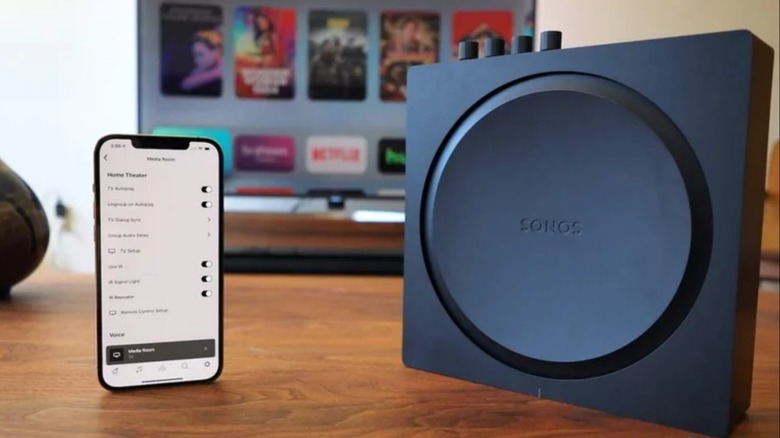Sonos Architectural Review: The Surprises Of Pro-Installation
- Professional installation is unexpectedly affordable
- Sonos Amp is powerful and flexible
- Arc + Sonance pairing sounds great with Dolby Atmos
- Getting rid of wires makes for a cleaner aesthetic
- You pay for Sonos' convenience and ease of use
- Pro-installation means a site visit
Sonos may be best known for its standalone connected speakers, but its built-in speaker range, Sonos Architectural, is gaining traction in a space still fairly unfamiliar to mainstream users. Professional installation isn't new, but there are still preconceptions about just how attainable it is, with assumptions that it's reserved for multi-million dollar mansions with similarly lavish budgets. When I set out to give a home theater system a Sonos Architectural upgrade, though, I discovered some big surprises along the way.
Sonos Architectural In-Depth
With models like the One and Five, Sonos has made straightforward setup into an art: basically plug them in to power, and then connect them to the wireless network through the Sonos app. For the past few years, though, the company has also been offering Sonos Architectural: systems designed to be installed into walls, ceilings, or even outdoors. That involved looking beyond what consumers might think is most important, and instead getting to grips with what professional installers needed.
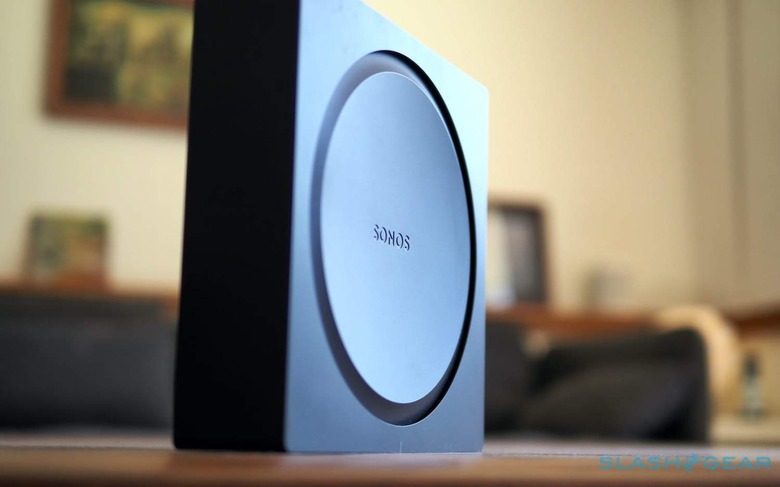
"It started with Sonos Amp," Benjamin Rappoport, Director of Product Management for Architectural at Sonos, explained to me, "and it really started with going out in the field and first talking to installers in their home turf. Their shops and stores. And then going on-site and seeing them applying their craft, their trade. What I was blown away with, was you think of an AV professional as a tech, kind of a nerdy person, but this profession is so much more than that. There's this people-managing-expectations kind of skillset. There's this insane level of attention to detail and craftsmanship. And then there's that they're exposed, anything that goes wrong the client can potentially see."
The result was the Sonos Architectural by Sonance lineup. Launched in early 2019, it shifts away from the self-contained model for the company's other speakers, instead assuming that the speakers and their amplification will be separate. At the same time, the range tries to bring some of the polish Sonos is known for to pro-installs.
"What we realized was that we could do more to make this more elegant," Rappoport says. "They pay attention to subtle details, so we paid attention to subtle details too."
Sonos Amp is at the heart of Sonos Architectural
Sonos actually started out making connected amplifiers designed to power other company's speakers, and they're still a key part of the range. The latest Sonos Amp ($649) is also the fundamental heart of Sonos Architectural installations, not to mention unexpectedly flexible in how it can be used.
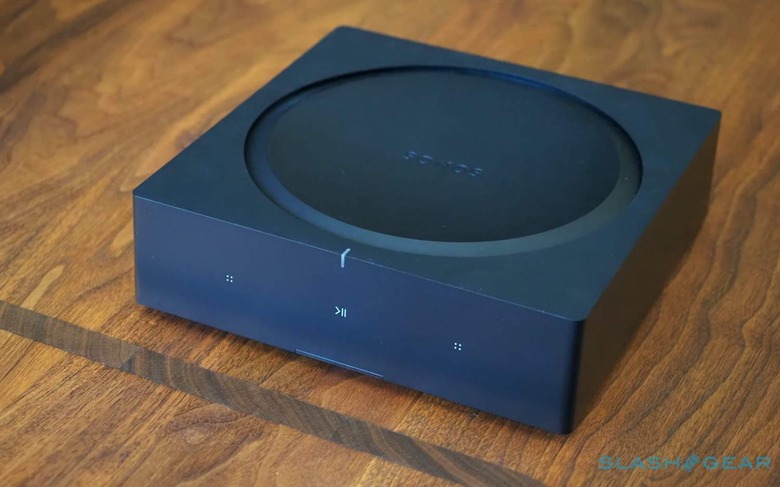
It's a fairly nondescript black box, measuring 8.54 x 8.54 x 2.52 inches and weighing 4.6 pounds. Sonos put touch-sensitive controls for playback and volume on the front, much like its recent standalone speakers, but I suspect most people will hide their Amp away and rarely, if ever, use the on-device controls. In my case, it's tucked away in what has become my network hub: a closet where my cable modem, router, and other devices live.
Inside Amp is a Class-D digital amplifier, with 125W per channel at 8 ohms. On the back there are two sets of banana plugs – one for the right channel, one for the left – to hook up your speakers. You can actually run multiple sets of speakers off a single Amp, assuming they're all 8 ohms and you wire them in parallel, though the same audio will, of course, come through each pair.
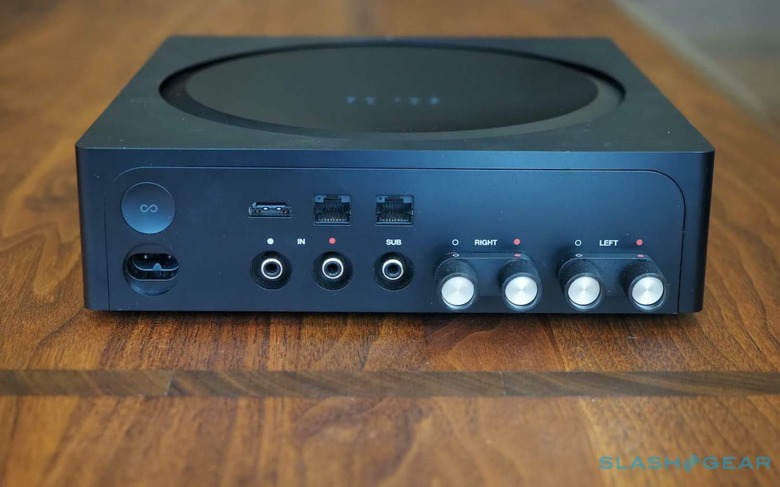
There's also an RCA subwoofer output, if you're not using the Sonos Sub ($699) which connects wirelessly, plus an RCA analog input. Two ethernet ports and built-in WiFi b/g (2.4GHz) give you options for getting the Amp online, plus support for Apple's AirPlay 2. Finally, there's an HDMI port for using Amp with a TV: either with HDMI ARC or, if with an adapter, through the TV's optical digital output.
As far as controlling an Amp goes, that's just the same as a Sonos Five or any other recent speaker. You can set it up as a zone of its own, or group it with other models either in the same room or multiple rooms.
Architectural speakers by Sonance unlock Sonos' secret weapon
A Sonos Amp is flexible enough to drive most speakers, but if you're installing from scratch then Sonos does have some recommendations. It worked with specialist Sonance on three variations designed to work seamlessly with Amp and the Sonos ecosystem: in-ceiling, in-wall, and outdoor.
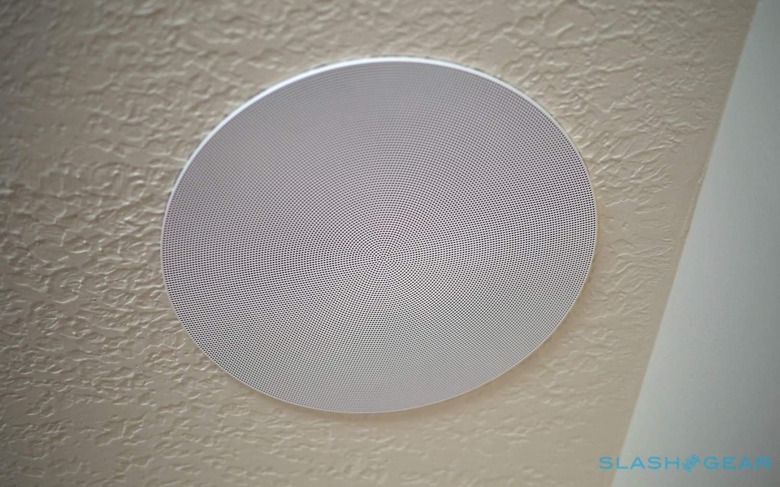
For my room, that meant a set of in-ceiling speakers ($599/pair), with round grilles. There's a distinctly Sonos-aesthetic to them: they're closely recessed to keep the edges low-profile, and the array of tiny grille holes look a lot like those on the front of Sonos' own speakers. You can paint the grilles as well, to match the ceiling – or the wall, in the case of the in-wall models – while the outdoor set is weatherproof.
They're passive speakers – so they need an amplifier – and each is 9.27-inches in diameter, with a 1-inch tweeter and a 6-inch bass driver. You can drive up to three pairs from a single Sonos Amp, all playing the same music of course.
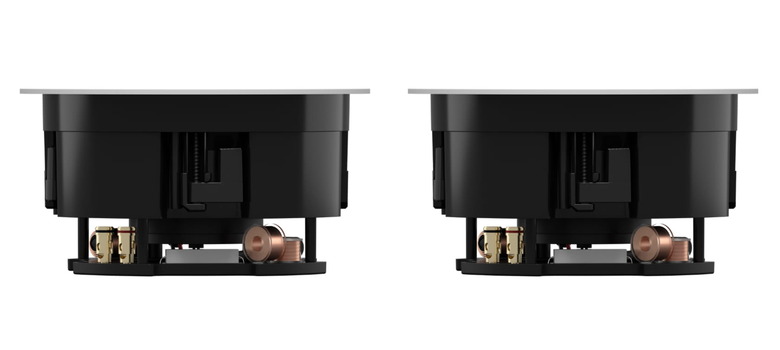
There's a very good reason to go with the Sonance-made speakers. Sonos Amp supports Trueplay, the company's automatic tuning system, that intelligently configures the EQ settings to suit the shape, size, and acoustic properties of your room. Basically, you walk around the room, slowly waving your iOS device around while the speakers emit a whooping tone for about 60-90 seconds. From that, Amp can adjust as necessary to deliver the best possible audio balance.
Thing is, Trueplay only works with speakers Sonos knows, so that means if you're not using either an Sonance in-wall or in-ceiling set then you can't use the system. You'll still be able to manually tweak treble and bass in the app, but that's a lot less granular than what Trueplay is doing.
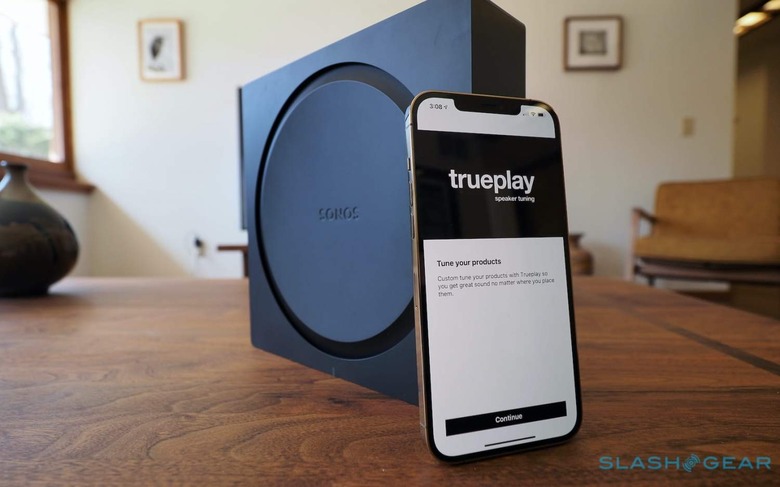
In my case, the media room in which I wanted to use Sonos Architectural to add rear left and right channels presents a couple of challenges. For a start the ceilings are relatively low, at 8 feet. The couch is positioned against one wall, and the TV against the other, opposite it. However while windows make up the third wall, the fourth is actually open into a corridor.
It makes for imbalanced acoustics, especially when I was trying to deliver rear channel sound with a pair of Sonos One speakers. The left rear channel, in the corner of the rear wall and the window wall, always sounded a little better than the right rear channel, which had the corridor to contend with.
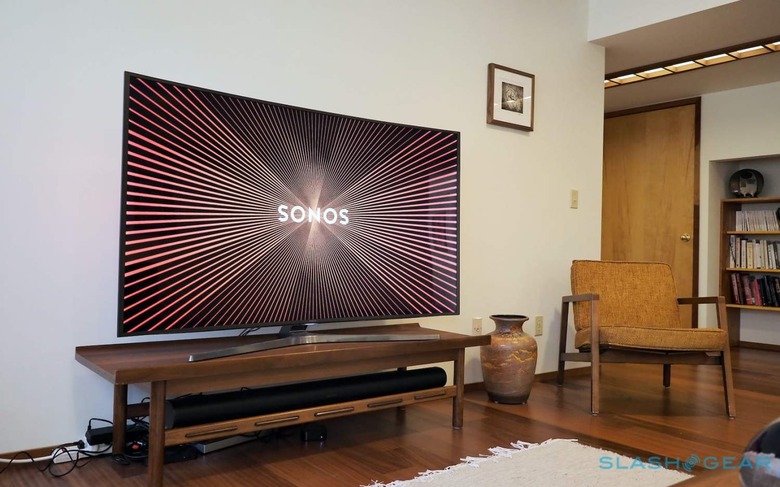
Trueplay, and the Sonance speakers, proved to be the secret weapon. They're more powerful than the Sonos One pair I was using before, but Sonos' auto-tuning system also seems to have balanced out the tricky acoustics in a far more successful way. You can turn Trueplay off if you want to, whether just to hear the difference in sound or because you don't like the results, though I'd recommend leaving it switched on. I find it really helps bring out the highs and mids in particular.
You don't know what's inside the ceiling until you cut
I'll confess, part of me did wonder if I could just install the system myself. I'm not entirely inept at DIY, and the Sonance speakers come with a template to help you with the 8.25-inch circle you need to remove from the drywall. In theory, I'd just have to cut a couple of holes, slot the speakers into place, and then run the cabling back to the Amp.
As the team from Paulson's Audio & Video in Farmington Hills, MI, explained wryly to me, however, if there's one thing you can guarantee when you're doing a home audio or smart home install it's that what's inside the walls and ceiling can be a frustrating surprise. Sure enough, my house presented an unexpected twist to the original plan.
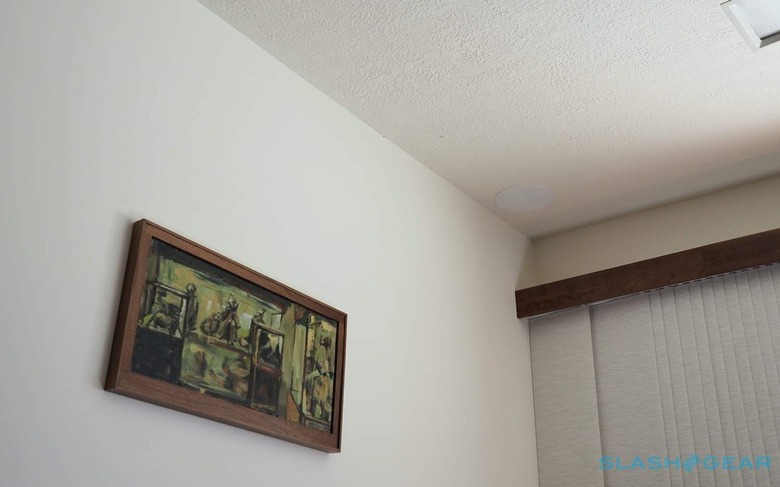
The goal initially was to line the speakers up with the existing recessed lighting in the ceiling, primarily with aesthetics in mind. The first team on-site, though, discovered ceiling joists running across that section. Importantly, they discovered that with a tiny pilot hole rather than, as I would've done in my DIY enthusiasm, just cutting the speaker hole out and then wondering how I was going to patch the offending opening.
A second potential location, further into the corners of the ceiling, escaped the joists, but revealed another challenge: boxed steel framing that supports the cantilevered room above. That presented a solid metal problem with getting the speaker cabling from the ceiling cavity through to the closet on the other side, where the Amp would live.
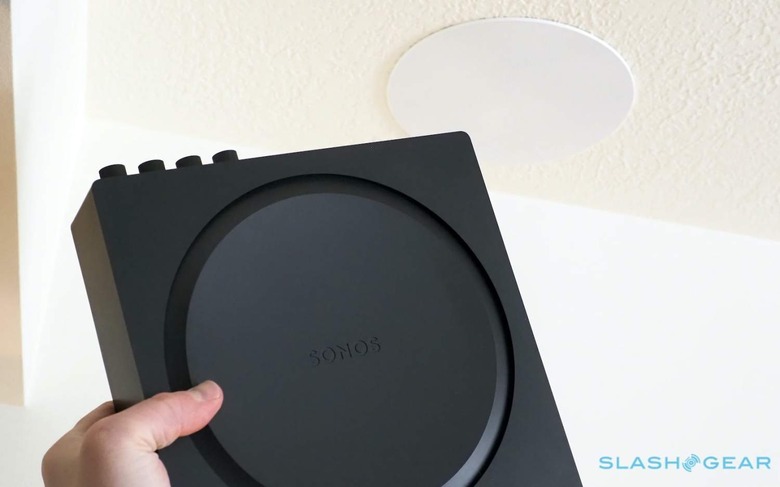
I wasn't entirely keen on the idea of drilling holes in something so obviously structural, and quite honestly if this had been a do-it-yourself project there's a fair chance I would've given up at this point. A follow-up visit from Paulson's, though, was a reminder of why professionals can be so valuable. They managed to snake the cables through tiny gaps and somehow get them down, into the closet, without needing to do anything drastic to the metal boxing.
Even with those headaches, my Sonos Architectural install was relatively basic, compared to what pro-installers are capable of doing. Think along the lines of full home theater rooms, Sonos speakers installed in every room of the house, and often professional smart home systems like Control4, Crestron, or others fitted to control all that plus lighting, shades, security, and more.
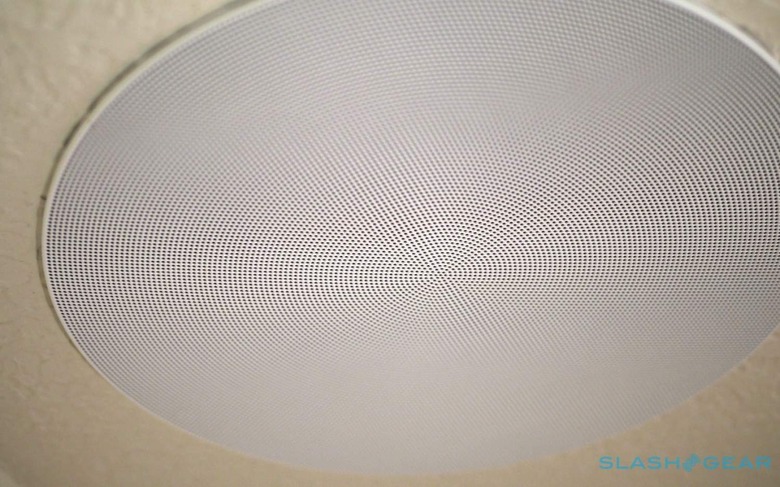
All the same, Paulson's pointed out, that's not to say the smaller jobs aren't on their radar too. There's been an uptick in people dipping a toe into home installs, particularly during the pandemic, as people redirect their vacation budget, say, to building out a better home cinema. One of the huge advantages to having the pros come out is that they know both the hardware and software, and how to install it all successfully. If you're an AV novice, with no idea where best to spend your surround sound budget, they can assist.
The downsides to a professional install are cost and disruption, though there I've been surprised at how affordable getting Paulson's in to do the hard work turned out to be. Obviously each job will have its own nuances, but the ballpark for an install like this in a typical layout and structure is roughly $200-300 for labor, plus the budget for materials and equipment. If you've got a more unique architectural design, that could nudge it up to $350-450 in labor.
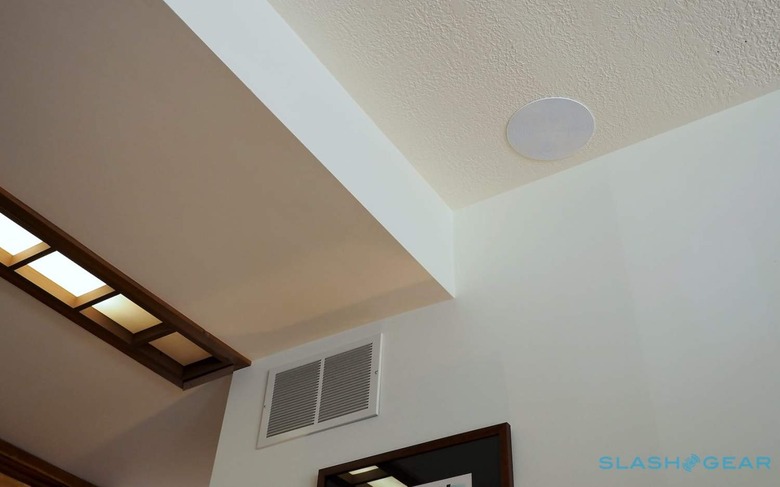
It's actually a fair amount less than I expected it to be, especially when you consider the degree of troubleshooting and expertise a pro-install team brings. Had I gone hacking into the ceiling myself, there's every chance that I could've ended up with the wrong size or shape hole, or have made a cut in the wrong spot. Patching that up successfully can be a big job, especially if you've got a textured ceiling where typically the whole thing needs to be redone.
As for the disruption, the original consultation and then both teams of Paulson's installers all followed social-distancing, wore masks while they were inside the house, and covered their shoes. They put down sheets to cover any furniture or flooring that might get dusty from cutting the ceiling, and then had their own vacuum on hand to tidy up afterwards. If it wasn't for the speakers in the ceiling, I wouldn't have known they'd been there.
Sound when you want it, subtlety when you don't
What's arguably been the best feature of the Sonos Architectural install, though, has been how seamlessly it all now fits in. Previously, the rear channel speakers were a point of contention in our house: I wanted them there for the surround sound, while my partner wanted them gone for the aesthetics. Sure, I could've wall-mounted them – Sonos offers a $99 pair of Sonos One mounts, for example – but that would've just changed their position in the room, not hidden them, plus left me with power cables to manage.
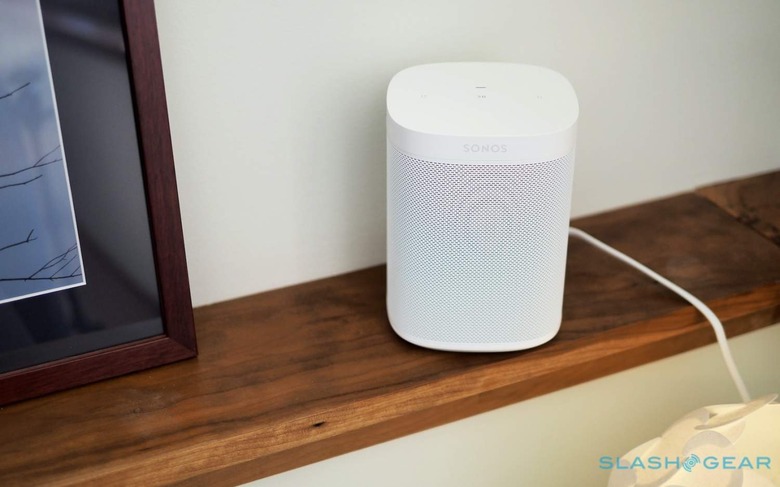
The Sonance speakers, in contrast, are as good as invisible unless you know to look up for them. The two white circles blend in with the ceiling neatly, and that's basically the extent of the visible system. If I want to tweak any settings I can do that through the Sonos app, while the Amp sits in a readily-accessible place next door.
As for the rest of the system, with the Amp and Sonance speakers taking care of rear surround duties, a Sonos Arc ($799) sits up front. There's a Sonos SUB in the corner for extra bass, though honestly I think you could probably do without that in a pinch. Arc and the Sonance duo deliver plenty of low-end on their own.
Of course, while installation may be unexpectedly affordable, that's not to say this is a cheap system overall. For hardware alone, you're looking at $2,746 for Arc, Amp, Sonance speakers, and Sub. That puts Sonos' system up against some serious home theater competition.
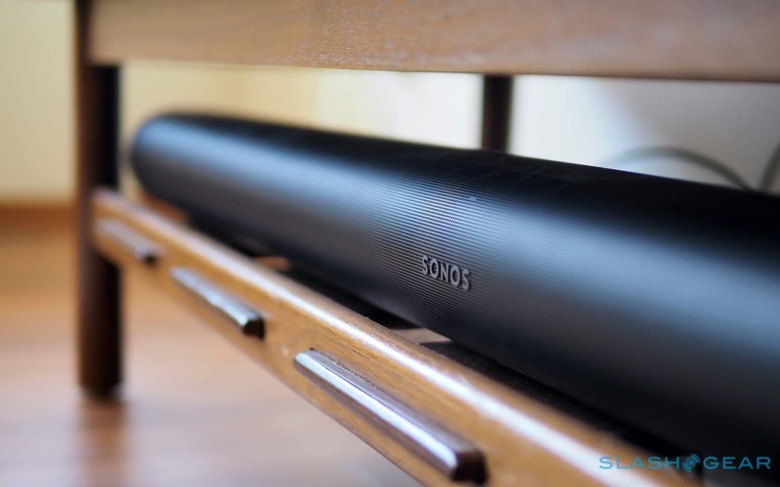
Like I said when I reviewed Arc, one of its strengths is the capability of its sound balanced against the ease of setup and use. It's Sonos' first soundbar to support Dolby Atmos, and with the right TV and the right content, it sounds stupendous.
Movies and TV shows that offer Atmos are still the minority, but the fact that the overall experience is so much better than with regular surround sound means it's worth looking out for the logo in iTunes, Netflix, Prime Video, or the other services that support it. Still, even "normal" surround sounds fantastic, and the Sonance speakers and Amp are more than up to balancing what Arc is capable of up-front.
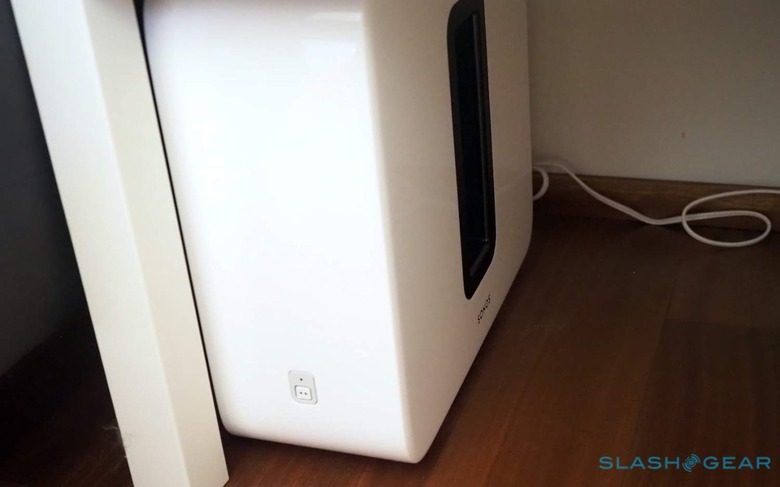
It's also worth noting that Sonos Architectural has been designed to fit seamlessly into a broader smart home system. "It's incredibly foolish to think about a home environment that has installed technology, and assume it's all sound," Sonos' Rappoport points out. That led to building APIs that the big names in pro-install automation, like Crestron, Control4, and others, can tap into.
"We have a set of APIs that Crestron can use to develop a Sonos-Crestron integration," Rappoport gave by example. "That set of APIs doesn't allow you to duplicate everything from the Sonos app experience, but it gives you the fundamentals. One of our core principles is that it doesn't matter where you start controlling from, the system state is universal. We view ourselves as one of the platforms that integrates with Crestron's platforms. The way we really make that powerful for people is the way we deliver that continuity of control."
Sonos Architectural Verdict
Quite honestly, I assumed my conclusion here would be that getting the professionals in for a job like this is a rewarding luxury, but that it would be priced out of the reach of "regular" people. Instead, not only has the convenience and performance of the Sonance speakers and Sonos Amp been a noticeable improvement on the previous rear surround speakers I was using with Arc, the affordability of their installation makes it a no-brainer.
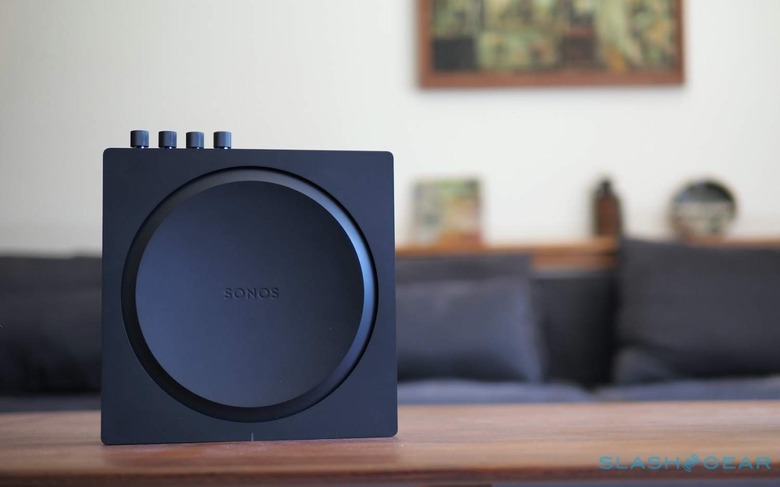
I'm fairly confident that Sonos Architectural could be installed by a reasonable DIYer. You might even get lucky, cut the right sized hole in the ceiling or wall, and find no unpleasant surprises waiting for you inside. Of course, you could just as easily discover a weekend or more of work, including patching up plaster or worse. Being able to hand that responsibility over to a team who absolutely knows what they're doing... well, I wouldn't try to give myself a filling instead of seeing an actual dentist, and I think this falls into the same category.
The result is a system that sounds better and looks cleaner, and with the convenience that Sonos is known for. I may be using the Sonos Architectural system for home theater, but it's just as capable for a more discrete multi-room system, and the fact you can run several sets of Sonance speakers off a single Amp makes filling a much bigger space all the more realistic. If you've always discounted professional installs because you assumed sky-high pricing, it's definitely worth getting a quote because you really may be surprised. The road to slick home entertainment has never sounded, or looked, so sweet.
